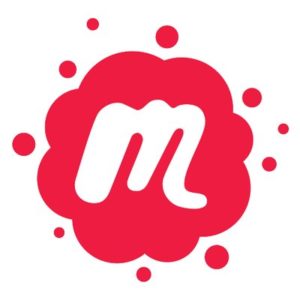7 Tips for Digital Asset Management (DAM) Meetup Group Sustainability

When I started out as a digital asset management administrator, one of my first stops was to the NYCDAM Meetup Group. I had heard about them at Henry Stewart and Createasphere and was seeking real-world advice on best practices, user acceptance, and a host of other issues involved in managing a DAM. No disrespect to our vendor friends, but I needed to know less about the art of the possible, and more about day-to-day reality.
NYCDAM was just what I needed. I met so many wonderful, smart people who were so willing to share their experience and expertise to help me succeed. Not only did I learn about a wide range of topics and issues, but I got to share my own experiences and get feedback—a helpful thing for professionals at all levels. Over time, I went from regular attendee to occasional panelist, to eventually becoming an organizer.
This year, as a result of my roles with DAM Guru Program and the NYCDAM Meetup group, I had more contact with meetup organizers and members. I started to notice a trend of DAM and Content Management Meetups losing momentum, and not having as many events. Then, this summer, three or four organizers of Meetups dropped out, and a few other Meetups just ended. Some of the reasons are probably fairly common: Lack of time and resources, low attendance at events, lack of sponsorship to offset costs. It’s a hard thing to do and sustain on your own, I know well.
The NYCDAM Meetup has shifted organizers a bit in the past few years, but from those shifts, I’ve gleaned sustainability tips for growing and strengthening a Successful DAM Meetup Group:
- Reach out and ask other members to be co– or assistant organizers. If you are running a Meetup on your own, as it grows and becomes more successful, you will eventually find yourself buried, and the Meetup will fall by the wayside. Running an entire Meetup can become overwhelming, and it’s a lot to manage when you already have a full-time job.
- Allow people to be involved at varying levels, and try to have 3 or more organizers at each level. Spreading the workload prevents burnout, but also brings more ideas to the table:
- Main Organizers: Long-term commitment and vision. Oversee general running of the group. Provide 10,000-foot-view of goals of the group and its events. Networks with industry people, in and out of the group, to grow membership and expand event scope
- Event Organizers: Short-term, high-level commitment for duration of event planning. They pick the topic, lead and collaborate on the panelists, subject and agenda. Manage event logistics
- Event Assistance: Short-term, low-level commitment. Much needed “boots on the ground” on the day-of
- Involve vendors, but be sure you define the rules of the road. You likely want your events to be user-focused and not devolve into vendor marketing or demos. But, your vendor contacts can introduce you to potential members and panelists, or can provide appropriate venues at little or no cost. See if they can connect you with users in your area who can share their experiences and a user-based view on varying technologies. Remember that vendor’s tech may only be one in their integrated solution stack. That perspective could be very helpful to meetup members.
- Associations can be another great resource for speakers, topic, and venues. Reach out to your local library, tech, or archiving associations to see if they will partner with your Meetup
- Use online services/apps to stay connected with organizers at all levels. Many collaboration services have free options that are sufficient for a small group like a Meetup. Here are a just a few that we and many other groups use:
- Slack (collaboration and event management)
- Zoom Conference (high-quality web & video conferencing. Note: the free option limits you to 40 minutes per call, but that actually makes your meetings surprisingly efficient!)
- Google Hangouts (collaboration & video conferencing)
- Doodle (polls facilitating meeting scheduling)
- Sign up for Meetups just outside of your area that are thriving. Partner with other meetups in your state or wider geographical area. If the Meetup is thriving, you may be able to connect with members who are willing to be speakers at your events as well, either in person or virtually. And, in general, it will expand recognition of your group in other areas.
- Ask your members for help. If general tasks become overwhelming, get your membership involved. They don’t need to take on full roles; but on an ad hoc basis, they can help you sustain the Meetup group’s momentum.
Do you have any other suggestions? We’d love to hear from you. Many of our members belong to Meetups or are organizers themselves. If you have some sustainability tips for a DAM Meetup Group, email them to me! DAM Guru Program would love to publish your suggestions as blog posts. Your advice could help fellow DGP members keep their groups going.
If you are looking for Meetups in your area, check out our Meetups Page with a handy list of known DAM-related Meetups worldwide. If we are missing one, please let us know and we will add it to the list!
This post originally appeared on the DAM Guru Blog.Share this Article: